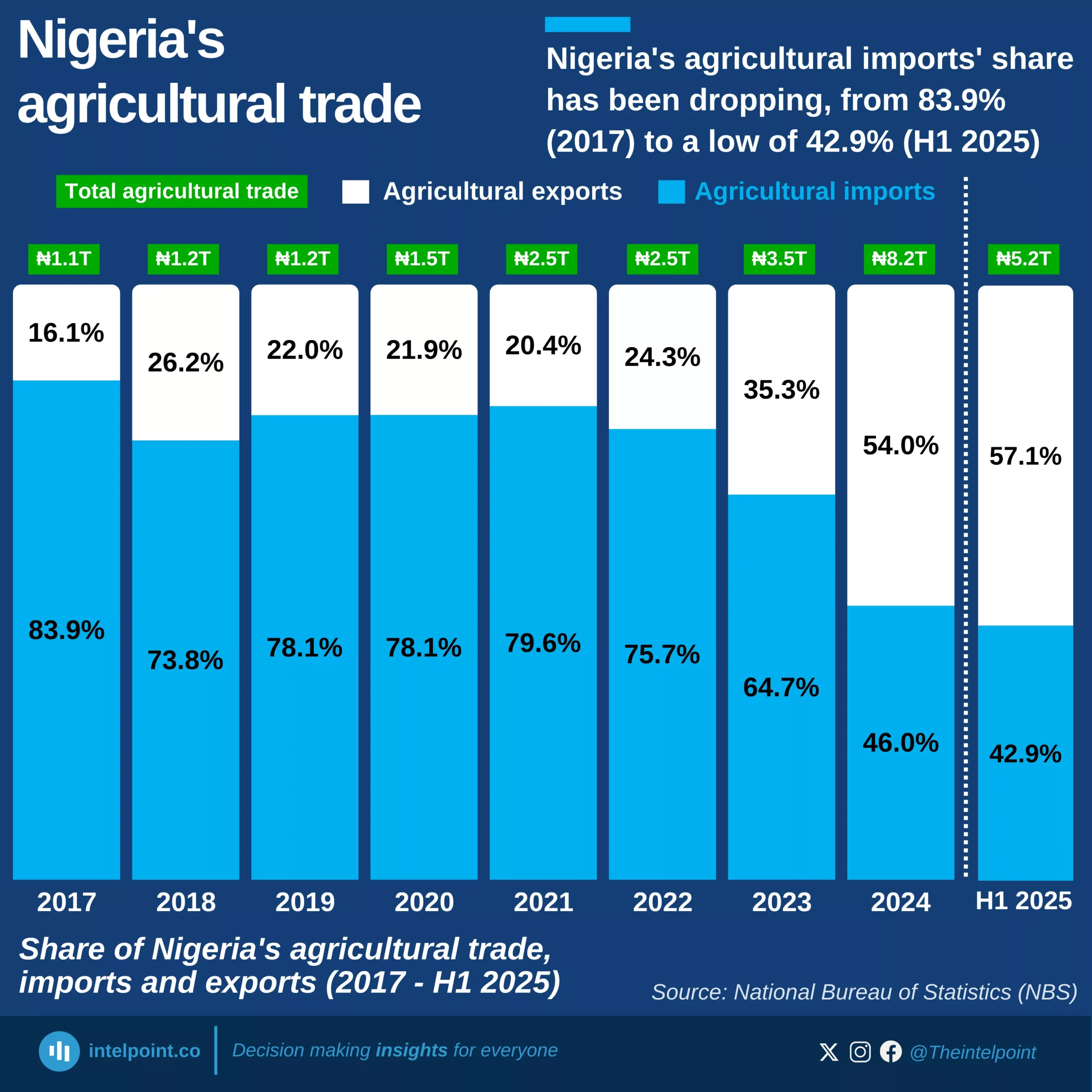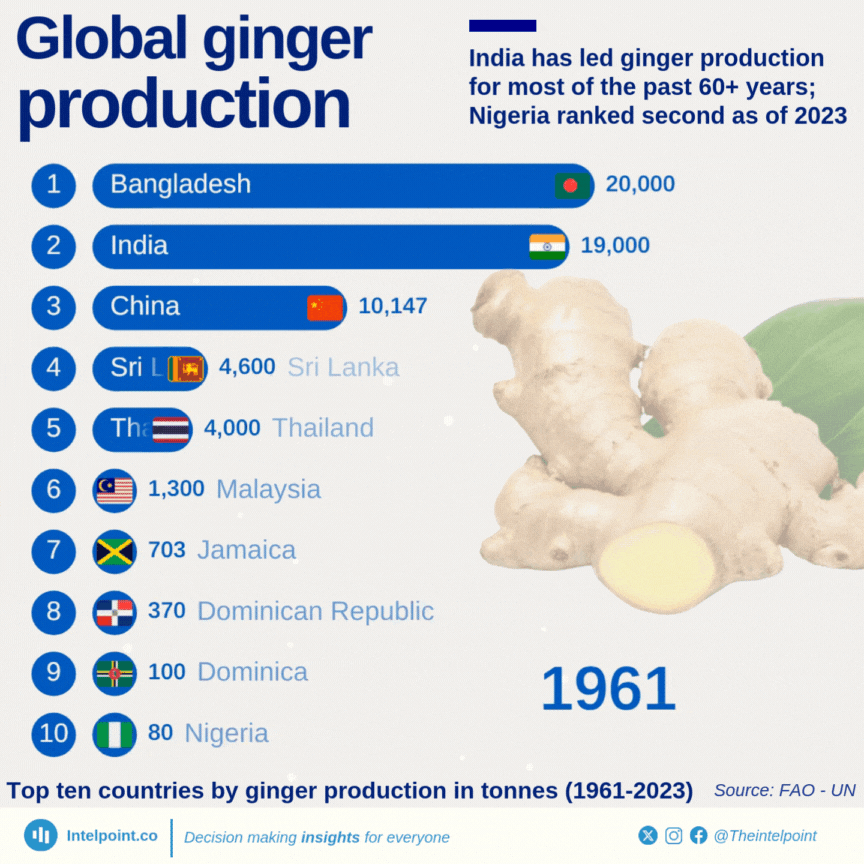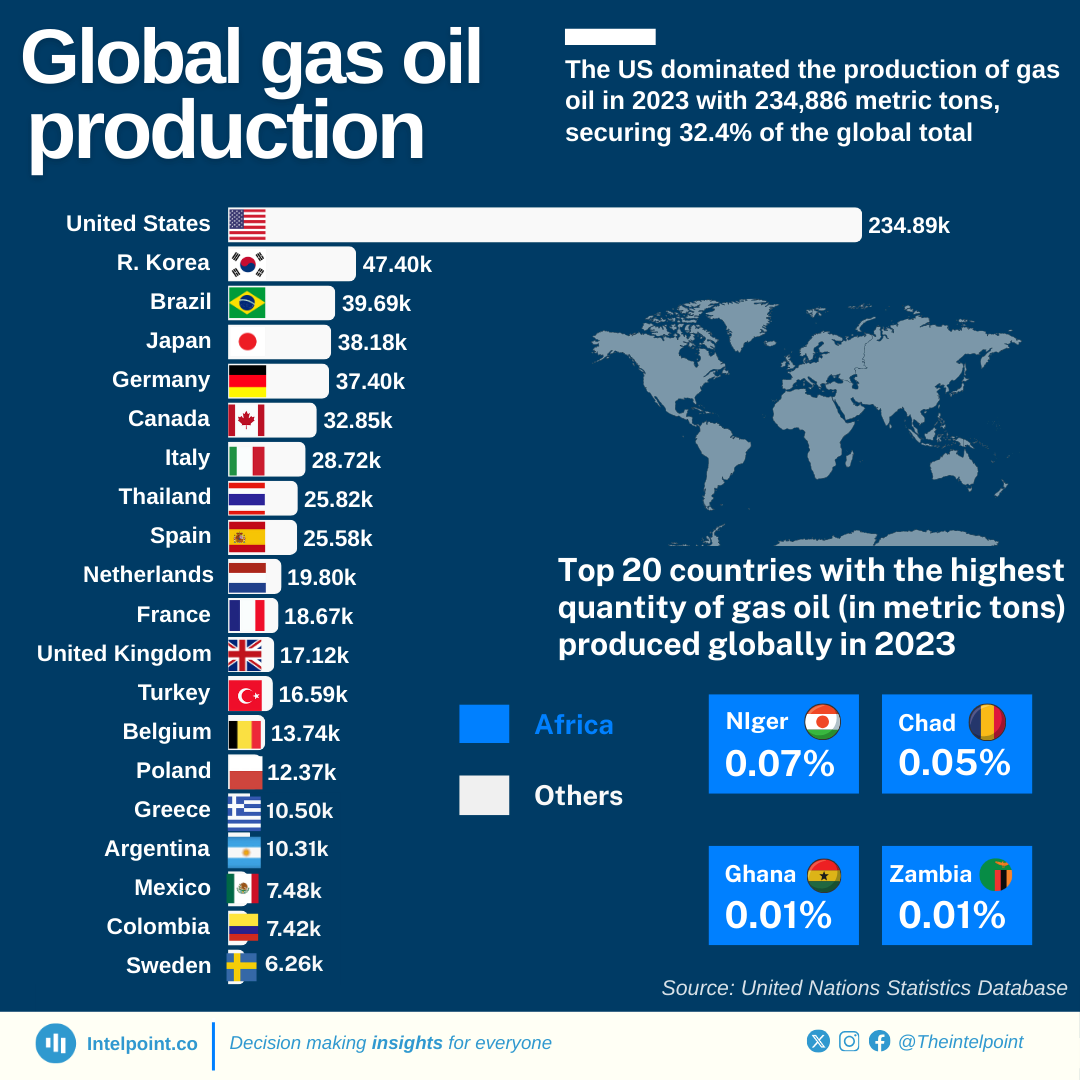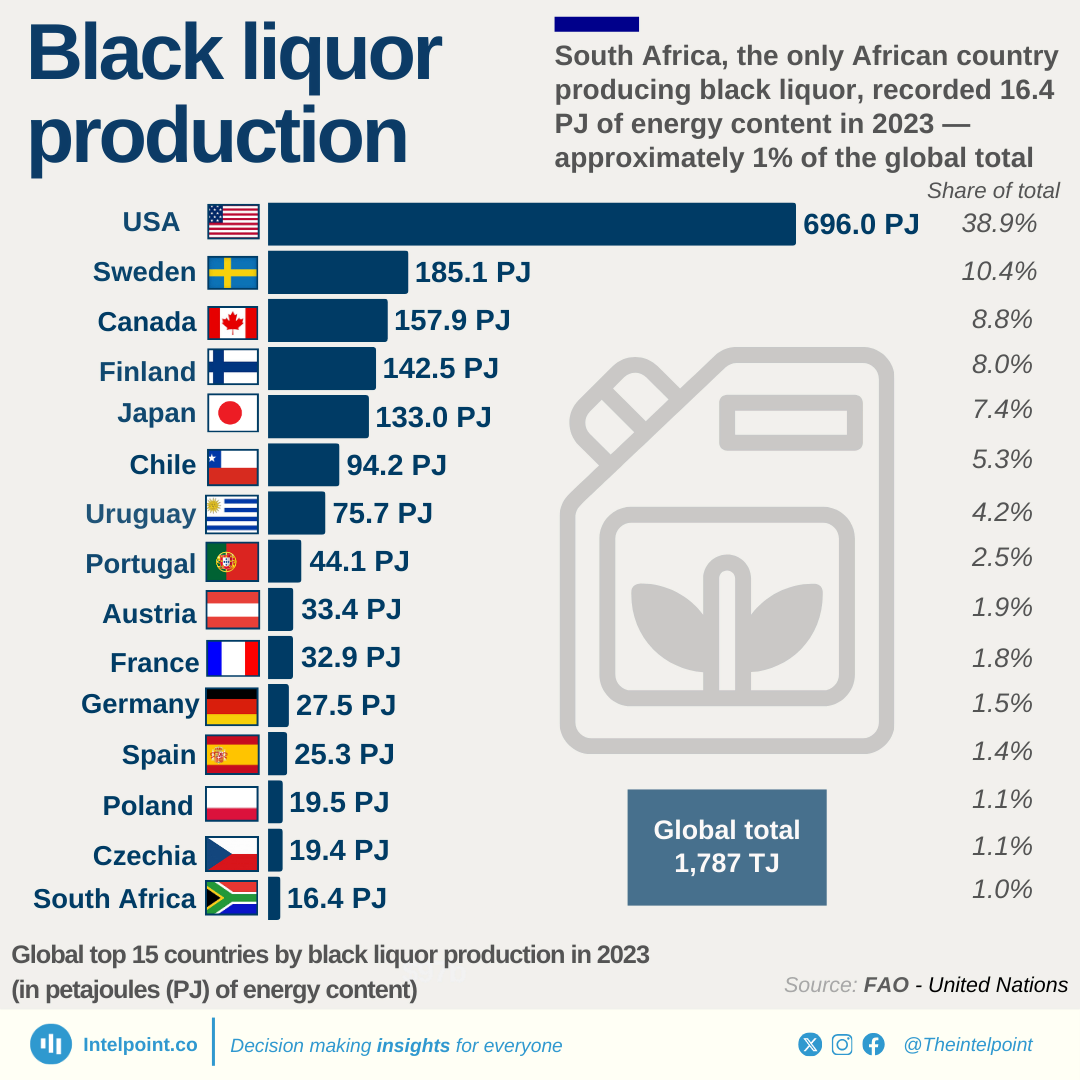In 63 years, Africa’s pig herd grew from about 5.7 million to nearly 48.9 million head, a nearly nine-fold rise. The trajectory has been marked by shifts in leadership.
South Africa dominated pig production through the 1960s–1980s, but was gradually overtaken by Nigeria, which surged from the 1990s onward and has remained the continental leader as of 2023. More recently, Malawi and Uganda have risen rapidly, and together with Nigeria now account for almost half of Africa’s total pig herd. Malawi in particular has posted one of the fastest growth rates, reaching over 9 million head by 2023, while Uganda has built up nearly 4.8 million. Meanwhile, mid-sized producers such as Cameroon, DR Congo, and Mozambique add regional balance, though most African countries still maintain herds under one million. This mix of long-standing leaders and newer high-growth players highlights the structural transformation underway in Africa’s pig sector.
Over the same period, global pig numbers rose from 406 million to about 965 million, more than doubling. This means Africa’s share of the world’s herd, though rising in absolute terms, has remained small, hovering around 1–5% depending on the year and standing at just 5.1% in 2023.





